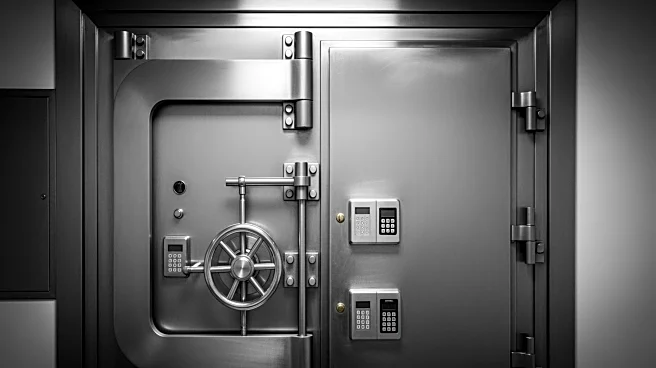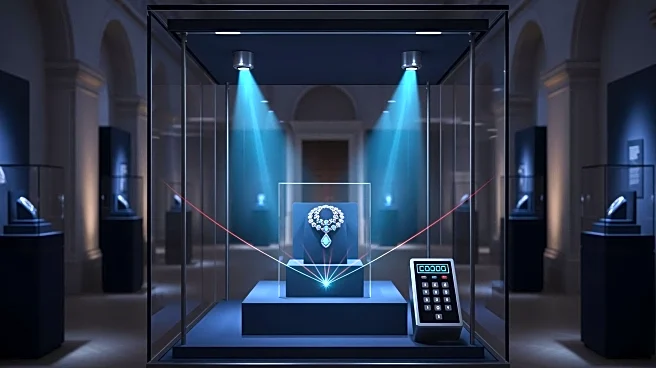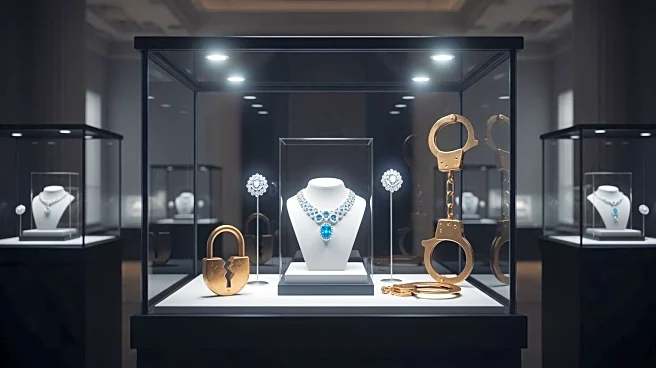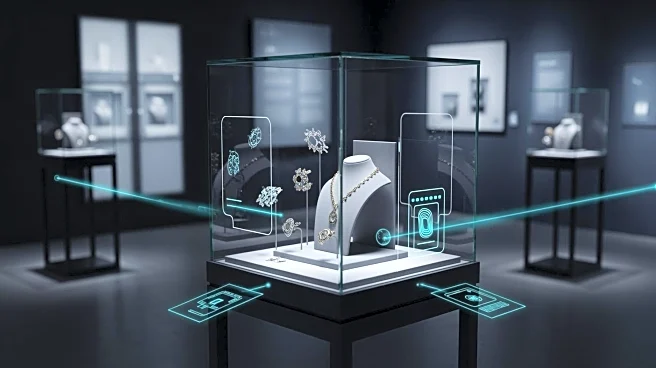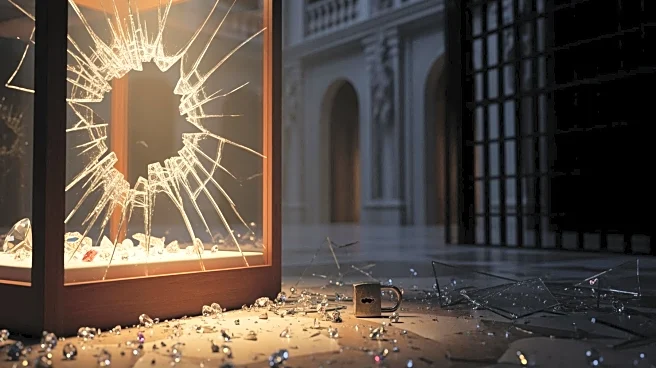What's Happening?
French authorities have announced the arrest of suspects involved in the recent jewelry heist at the Louvre Museum in Paris. The robbery, which took place last week, involved four individuals who stole jewelry valued at over $100 million. The Paris prosecutor,
Laure Beccuau, confirmed that arrests were made on Saturday evening, including one suspect apprehended at Charles de Gaulle Airport while attempting to leave the country. The stolen items include gem-studded royal tiaras, necklaces, and earrings dating back to the 19th century. The arrests mark a significant development in the investigation, although it remains unclear if any of the stolen jewelry has been recovered.
Why It's Important?
The arrest of suspects in the Louvre heist is a critical step for French authorities as they work to prevent the stolen jewelry from being dismantled and sold on the black market. The theft of such high-value items not only represents a significant loss to cultural heritage but also poses challenges in terms of security and law enforcement. The successful apprehension of suspects may deter future attempts at similar crimes and restore confidence in the security measures of major cultural institutions. The outcome of this investigation could influence international cooperation in art and cultural property crime prevention.
What's Next?
French investigators are continuing their efforts to recover the stolen jewelry and identify all individuals involved in the heist. The focus will likely be on tracing the stolen items before they can be altered or sold. Authorities may also review security protocols at the Louvre and other museums to prevent future incidents. The arrests could lead to further cooperation with international law enforcement agencies to track down any remaining suspects and recover the stolen artifacts.
Beyond the Headlines
The Louvre heist highlights the ongoing challenges faced by museums in safeguarding valuable artifacts. It raises questions about the adequacy of current security measures and the need for technological advancements in surveillance and protection. The incident may prompt discussions on the ethical responsibilities of museums in preserving cultural heritage and the role of international collaboration in combating art theft.






